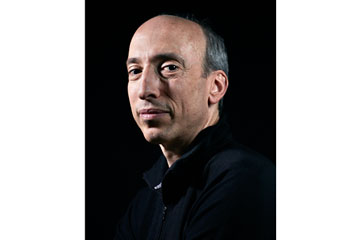
(2 of 4)
So the notion that someone has played games with LIBOR doesn't sit well with enforcers like Gensler, who think the very viability of the world financial system depends on transparency and a level playing field. From pro investors making giant bets to homeowners considering a refinance, practically everyone in the market relies on the assumption that the LIBOR benchmark reflects reality. "These rates are at the absolute core of our global financial system," he says. If they are falsely reported, "that goes to the integrity of markets and how much trust the public has in them."
It turns out that public trust was indeed misplaced. On June 27, after four years of investigation by the CFTC, Barclays became the first major bank to publicly admit that it had been rigging the rates it submitted for LIBOR for years, paying $450 million in fines as a result. Over a dozen other global banks are under investigation by the CFTC and other U.S. and European regulators for falsely reporting or manipulating LIBOR. A number of those banks have been setting aside massive reserves to deal with potential fines. UBS, which may end up paying even bigger penalties than Barclays, has socked away some $610 million to deal with possible regulatory issues.
A Motive for Fraud
The cleanup is largely due to Gensler, who has been leading the charge to uncover LIBOR fraud since he took over the CFTC in 2009.
A year earlier, there had been hints that something was off with LIBOR, which is unusually vulnerable to manipulation since it's not based on actual lending transactions. Instead, it's calculated through guesstimates submitted by a panel of 20 global banks. In some ways, LIBOR is a measure of banks' trust in one another's solvency. After all, you will offer a better deal on a loan to a borrower you feel confident can easily repay you than to someone whose finances seem weaker.
In 2008, as the financial crisis was building, that trust was manifestly declining--yet LIBOR wasn't rising. In those dark days, banks had a powerful motive to report rates lower than the real ones: the first banks that admitted having to pay more to borrow from fellow institutions would be effectively advertising the worries about their stability--admitting that they, and perhaps the entire financial system, were vulnerable.
Authorities knew something was up. (In 2008, Mervyn King, governor of the Bank of England, joked that LIBOR "is in many ways the rate at which banks do not lend to each other.") Yet regulators--some of whom may have feared market panic if LIBOR was exposed as unreliable--didn't jump on the case.
Except for Gensler. Working alone at first and then with other U.S. and international agencies, the CFTC trolled through thousands of e-mails, coming up with damning evidence. "Dude, I owe you big time," reads one e-mail from a trader to a Barclays staffer involved in fixing rates. "I'm opening a bottle of Bollinger." The Champagne may not have cost consumers anything--indeed, to the extent that LIBOR was kept artificially low, it's possible that people with loans pegged to that rate saved some money. But the LIBOR fixing illuminated a culture in which bankers routinely commit fraud while regulators turn the other way.
A Born-Again Regulator
